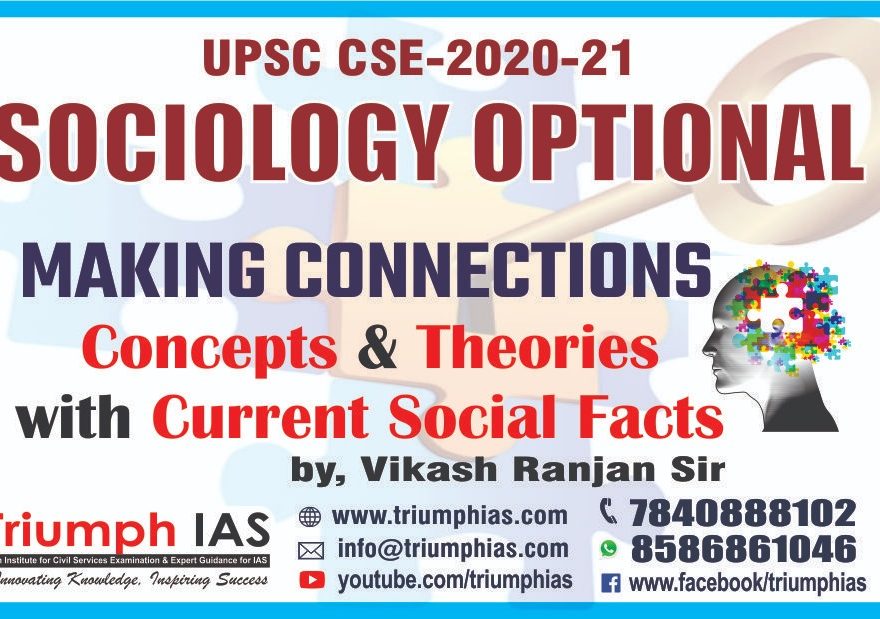Sociological Analysis of Covid 19 Spread-Did the Rich Infect the Poor in India?
Relevance: Sociology: Class struggle: Stratification and Mobility: Dimensions – Social stratification of class, status groups, gender, ethnicity and race.Challenges of Social Transformation: & G.S paper I: Society and social issues & G.S paper II: Governance: Welfare of the vulnerable sections of the society.
CONTEXT
There is a pat explanation of why, in spite of the lockdown, Covid-19 has created enclaves for itself, or hotspots, across the country.
How can this measure work where every sixth person lives in a slum and where a third of the world’s slum dwellers are found? No matter which way we look, we are cooked; either Covid-19 will kill us or the lockdown will eat us alive.
Therefore, if the coronavirus is proving to be more than a handful today, it is largely because of the poor. It’s nobody’s fault if the lockdown hasn’t quite contained the disease because the masses are just too numerous to control.
The truth, however, is that Covid-19 went off the charts because we failed to save the poor from the rich, and not the other way around. Poverty had little to do with the entry of coronavirus in India. Its main carriers were western visitors, a variety of travellers, including bigoted Tablighis, Indians returning from overseas, in short, people with passports and money to travel.
Maharashtra is the richest state but now most hit by Covid. Kerala has the lowest number of slum dwellers, only 0.6% of its population, yet it has one of the highest incidences of the disease in the country. In which case, it does not matter if 40% of Mumbai or 30% of Kolkata live in slums, or if half the slum households are just one-room shanties.
This lockdown would have done better if the poor could have been protected from the better-off when the alarm first rang. That would have meant declaring gated colonies and elite neighbourhoods as potential hotspots from the start and having every airport entrant tagged and medically checked.
According to cultural diffusion theory elements of culture spread from one society or social group to another, which means it is, in essence, a process of social change. It is also the process through which innovations are introduced into an organization or social group, sometimes called the diffusion of innovations, similar is the condition with communicable diseases, sociologist Dipankar gupta quotes, these diseases spread from one society to another, from elite to middle and from middle to poor class who are most vulnerable, let’s take the example of Kanika Kapoor and foreign members from tablighi.
While, when we talk about theory of social interaction which is an exchange between two or more individuals and is a building block of society, By interacting with one another, people design rules, institutions and systems within which they seek to live.
With symbolic interactionism, reality is seen as social, developed interaction with others. Ethnomethodology questions how people’s interactions can create the illusion of a shared social order despite not understanding each other fully and having differing perspectives.
Similar is the case of spread of COVID 19 in India, where the rich who could afford a foreign travel actually became spreaders, among middle and poor class society, though they have a varying perspective and their connection with such societies are rare, both the class are interdependent of survival of each other.
As Dipankar Gupta says, During the spread poor’s unconsciously were treated as solid waste, Just prior to the lockdown there were many instances when blue-collar staff employees often had to go through temperature checks before entering their workplace while the white-collar executives calmly floated in, and these blue collared staff actually went in through the sufferings after lockdowns, as the real carriers were white collared ones.
Ironically, though, we had a few things in our favour if we were serious about sealing off the rich. Not only are members of this class less numerous, making them easier to track and quarantine, but our entrenched social norms could have been leveraged towards this goal.
Inbuilt class and caste distinctions have, under normal circumstances, kept the rich from interacting with the poor; so why not use a bad habit, especially for a good cause?
Diffusion of two cultures one to which the rich belong and another one to which the poor’s do, is an essential element of society, as The poor need the rich to survive, so how does one get around that? Even though millions of slum households are busily producing carpets, saris, bangles, zari work, and so on, these humble self-entrepreneurs cannot make it on their own.
The global chain that they are a part of needs corporate entities at the other end to finalise the deals. This necessary interaction and diffusion which is actually fruitful for poor’s specially turned out to be an havoc for them, they didn’t even had a clue of what is happening but they are all jobless and largely dependent on government subsidies for survivals now, and they are the ones who are treated a solid waste weather at ANVT bus terminal or at Bandra terminus.
Let’s take a lesson from the conditions and should implement in our future policy and development programmes.
For more such notes, Articles, News & Views Join our Telegram Channel.
Click the link below to see the details about the UPSC –Civils courses offered by Triumph IAS. https://triumphias.com/pages-all-courses.php

